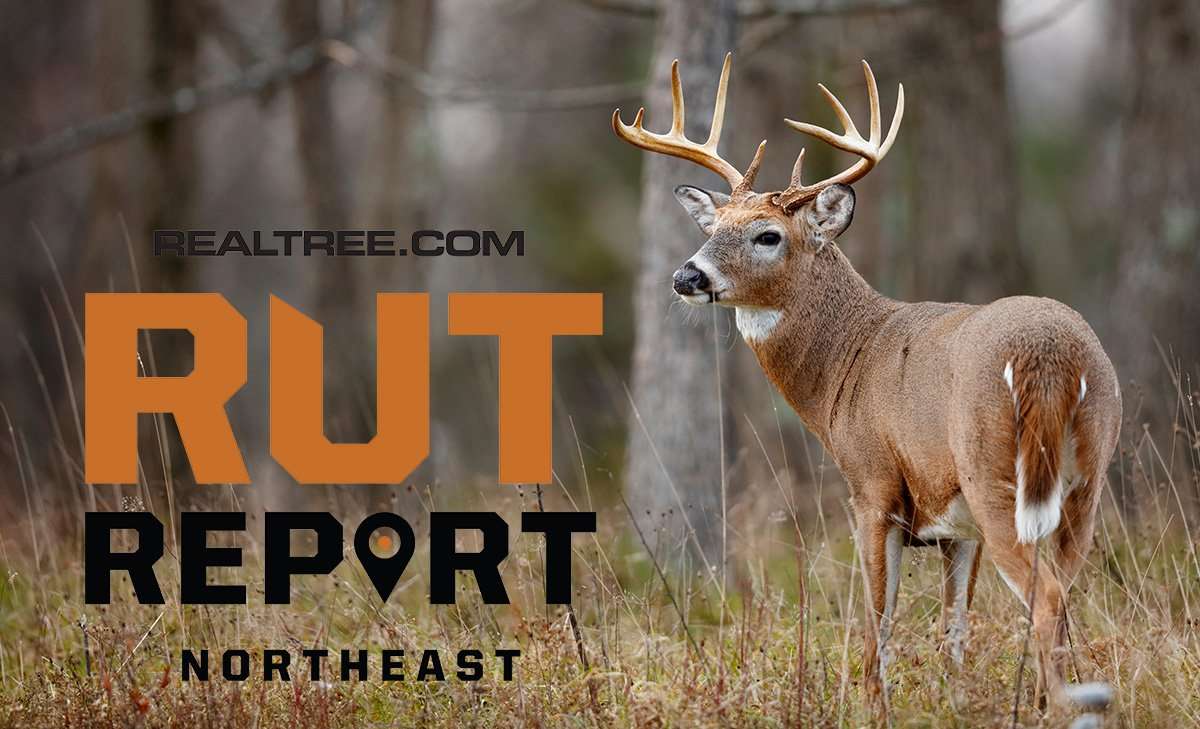Weather forecast is hit and miss, but pre-rut action is good in the Northeast

I forewent sleep to cash in on a hot striper bite. As I tooled along in four-low, I kept one eye on the surf and the other on the dunes. The sand was lit up under the glow of the full moon, and the local whitetail population was taking advantage of the ambient light.
The dropping temperature provided motivation for the deer to seek out whatever nourishment they could from the various grasses that hold the dunes together against the stiff autumn winds. As I watched a pair of does slowly feeding along, they suddenly became animated. A large buck emerged from the other side of the dune, with one thing on his mind. Unfortunately for him, neither of his potential mates was interested. He bothered them for a bit before they ran off and left him to his own devices.
That beach is located in a part of New York that has one of the highest deer densities in the Northeast, and the full moon had them all out and about. The bigger bucks I saw were all solo acts, but some smaller bucks were cruising in groups of two or three. Though the bucks showed plenty of interest, the does were not terribly receptive.
Vermont / New Hampshire / Maine
I've seen some smaller bucks bothering does, but they're just testing the waters, says Tobey Owen of Connecticut Lakes Guide Service, who has spent the last 28 years hunting the Great North Woods where New Hampshire, Vermont, Canada, and Maine collide. Up here in the big woods, there's plenty of land for deer to spread out.
We don't normally see much in the way of fighting, because there's not a lot of bucks. They usually have their pick of does. I've seen some scrapes, but no big lines yet, Owen says. Despite the vast distances that bucks have to disappear into, Owen has started to see bucks moving in the daytime. He's encountered more than a few bucks while on stand, but no real hammers yet. If you shoot all the small ones, you won't have any big ones — especially in an area like this with a low deer density. We're in the peak of the pre-rut, but the deer are still following their typical feeding patterns, he explains. You can find them in the clear-cut hardwoods, eating just about anything green they can find. They're on the raspberry bush real good. Apples, where they can get them. Should be on the beechnuts soon enough though.
The Great North Woods got hit with about 6 inches of snow on Monday, accompanied by 20-degree temps. Owen was able to find some bedded bucks and a handful of moose still-hunting just inside the Maine border on the freshly fallen snow, but activity was hampered by a 35 mph blow that kept creatures hunkered down. Unfortunately, you can expect to lose the tracking snow, as the Northeast is set to hit unseasonable highs later this week.
Maryland
There's no snow in the forecast farther down the East Coast, but the rut is active nonetheless. Maryland's Eastern Shore may be known as a waterfowling hotspot, but there's no shortage of deer in the region. Eastern Neck National Wildlife Refuge on the banks of the Chester River was home to the largest buck I've ever seen alive. I was assisting a friend working on the refuge with vegetation surveys when I noticed 12 points jutting above the rows of soybeans. I slammed on the brakes and spent the next half hour watching this big old boy sit with his legs tucked under him, chomping away without a care in the world.
Marcia Pradines is an avid hunter and the complex leader for all of the refuges in the Chesapeake Marshlands, including Blackwater and Eastern Neck. She had just spent the weekend in Blackwater with her mentee, as part of the First Shot Mentored Deer Hunt. The hunt, which pairs first-time adult hunters with skilled veteran hunters, was largely a success. With deer locked in the heart of the pre-rut, there were plenty of active bucks walking during daylight hours.
They're eating acorns, if they can get them. Pradines recommends that hunters seek out whatever mast they can find, though she noted that Maryland, like much of the East, didn't have a great mast crop. Many deer are making the most of agricultural areas. Look in the soybeans and corn, she says.
There are plenty of active rubs and scrapes around. We're seeing some seeking behavior, explains Pradines. Bucks aren't chasing quite yet, but it shouldn't be long now. There are enough encouraging signs that I'm taking off this week to hunt.
But whitetails aren't the only game in town, and she has a difficult decision ahead of her.
The sika are still bugling. Dorchester County is home to whitetail and sika deer, an exotic import from Japan that was released on James Island in 1916. Though they resemble deer, sika are actually a miniature elk. The sika rut kicks off in October, but it's still worth getting out after them.
Northeast reporter Joseph Albanese hails from New York. He began his career in wildlife management and has worked for multiple state and federal agencies. These days, he writes full-time about fins, feathers, and fur.
(Don't Miss: Have You Ever Rattled Up a Buck with a Climbing Stand?)







